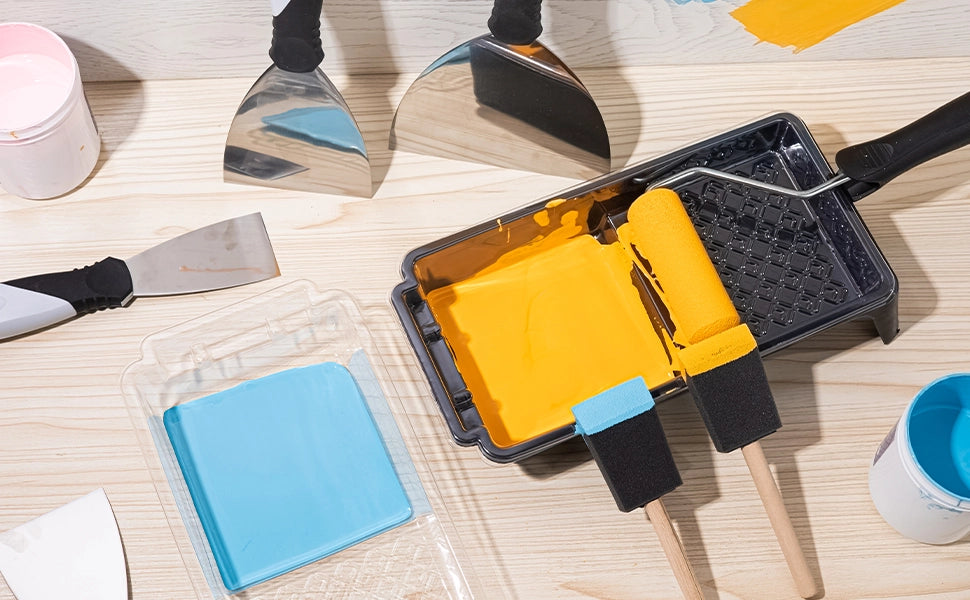Choosing the right painting tools can make or break your DIY project. Whether you're refreshing a room or tackling detailed trim work, understanding the strengths and weaknesses of paint rollers, brushes, and trays is key. This guide breaks down their pros and cons, ideal use cases, and real user experiences to help you pick the best tools for the job.
Paint Rollers: The Speed Champion
- Pros: Covers large areas quickly, delivers a smooth, even finish, and works well with water- or oil-based paints. Ideal for flat surfaces like walls and ceilings.
- Cons: Struggles with edges, corners, and textured surfaces; can leave roller marks if not loaded properly.
- Best For: Painting large, smooth walls or ceilings. A 9-inch roller with a medium-nap cover suits most home interiors.
- User Case: “I painted my living room walls in under two hours with a roller—amazing time saver!” – Emily, Seattle homeowner.
Paint Brushes: The Precision Expert
- Pros: Perfect for cutting in edges, trim, and detailed work; offers control for textured or uneven surfaces. Available in various bristle types (synthetic for water-based, natural for oil-based).
- Cons: Time-intensive for large areas; can leave brush marks if not applied skillfully.
- Best For: Trims, doors, windows, and furniture with intricate designs. A 1-2 inch angled brush is a must-have for corners.
- User Case: “My carved cabinet doors look flawless thanks to a small brush—worth the extra effort!” – Mark, DIY enthusiast from Texas.
Paint Trays: The Unsung Hero
- Pros: Ensures even paint distribution, reduces waste, and simplifies loading rollers or brushes. Liners make cleanup a breeze.
- Cons: Limited capacity; requires frequent refilling for large projects; can tip if not secured.
- Best For: All painting tasks as a companion tool. A standard tray with a textured ramp works for rollers, while a small tray suits brush work.
- User Case: “The tray kept my roller loaded perfectly and saved me from a messy floor—game-changer!” – Lisa, California renter.
Head-to-Head Comparison
| Tool | Speed | Precision | Best Surface | Cleanup Ease |
|---|---|---|---|---|
| Roller | High | Low | Flat walls, ceilings | Moderate |
| Brush | Low | High | Trim, details | Moderate |
| Tray | N/A | N/A | All (support tool) | High (with liners) |
Ideal Scenarios for Each Tool
- Large Room Refresh: Use a roller with a tray for walls, switching to a brush for edges and ceiling lines.
- Furniture Makeover: Rely on a brush for detailed woodwork, with a tray to control paint flow.
- Mixed Project: Combine all three—roller for broad areas, brush for finesse, and tray for efficiency.
Tips for Success
- Pair Tools Wisely: Use a roller for speed, a brush for detail, and a tray to keep everything organized.
- Prep Matters: Clean and sand surfaces beforehand to maximize tool performance.
- Maintenance: Clean rollers and brushes immediately after use; store trays dry to prevent rust.
Final Thoughts
Whether you’re a beginner or a seasoned painter, knowing when to use a roller, brush, or tray can elevate your results. Rollers save time on big jobs, brushes excel in precision, and trays keep the process smooth. Grab your favorites and start your next project with confidence!
Keywords: painting tools comparison, best painting tools, DIY painting tips, home improvement tools



0 comments